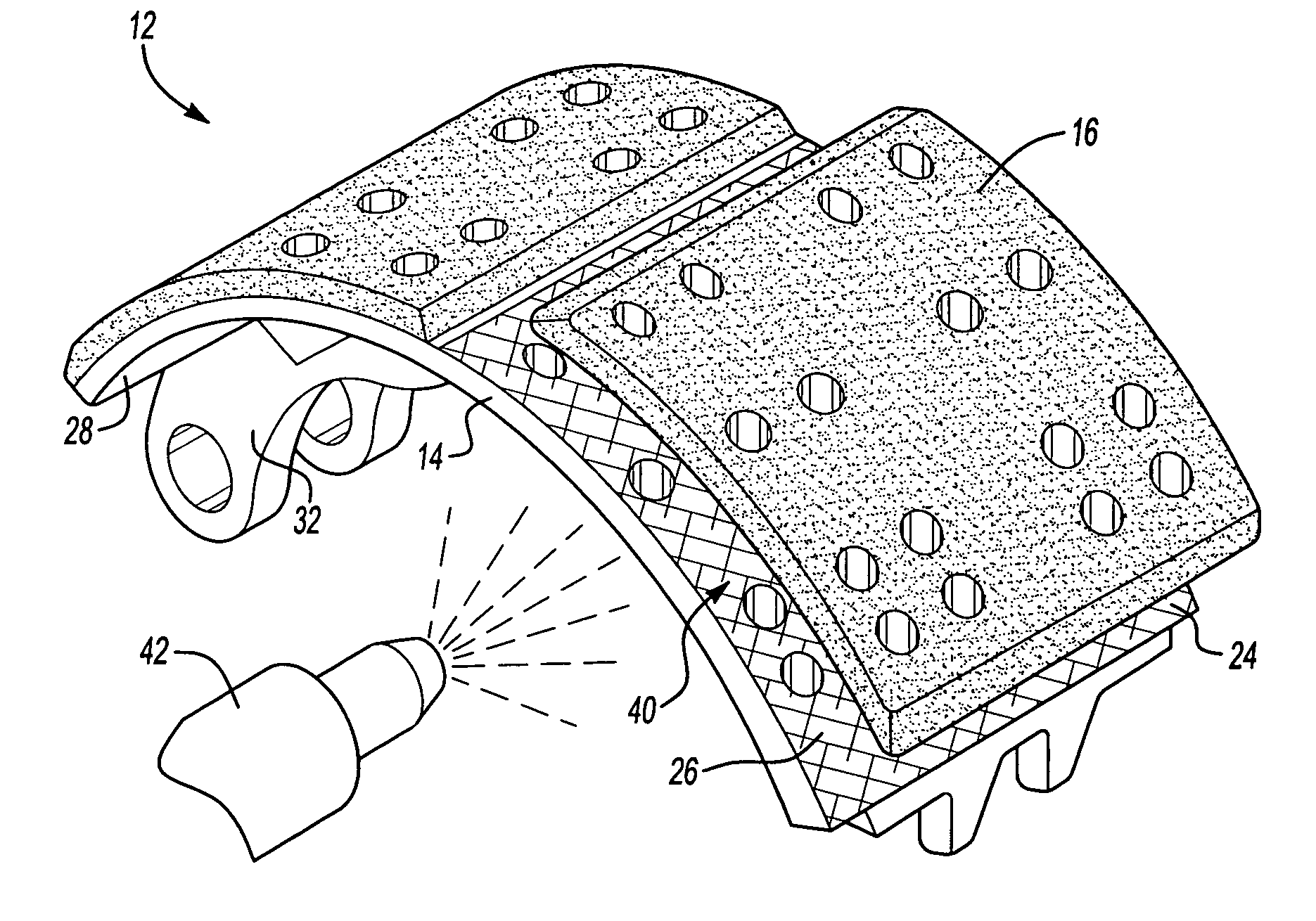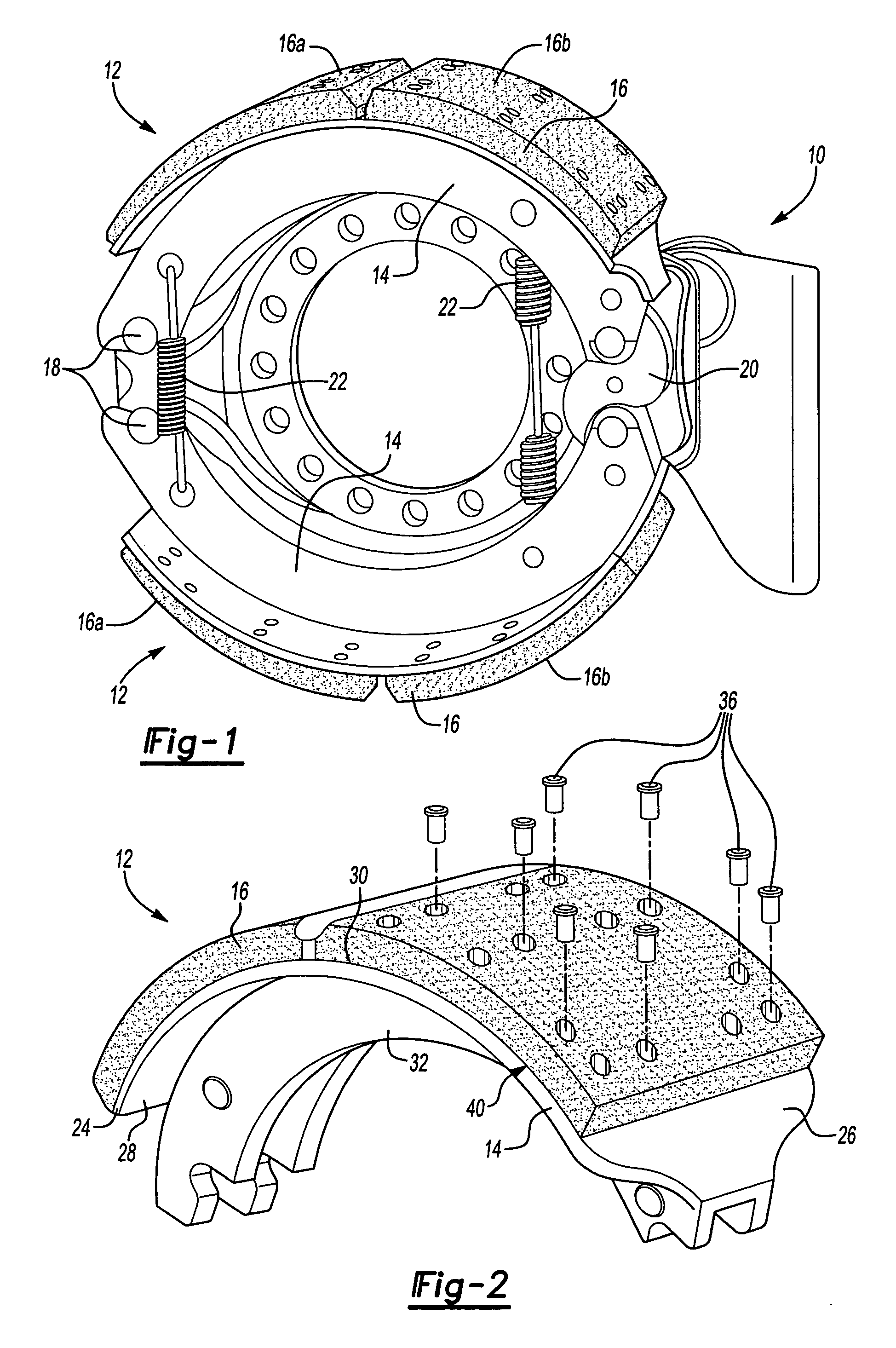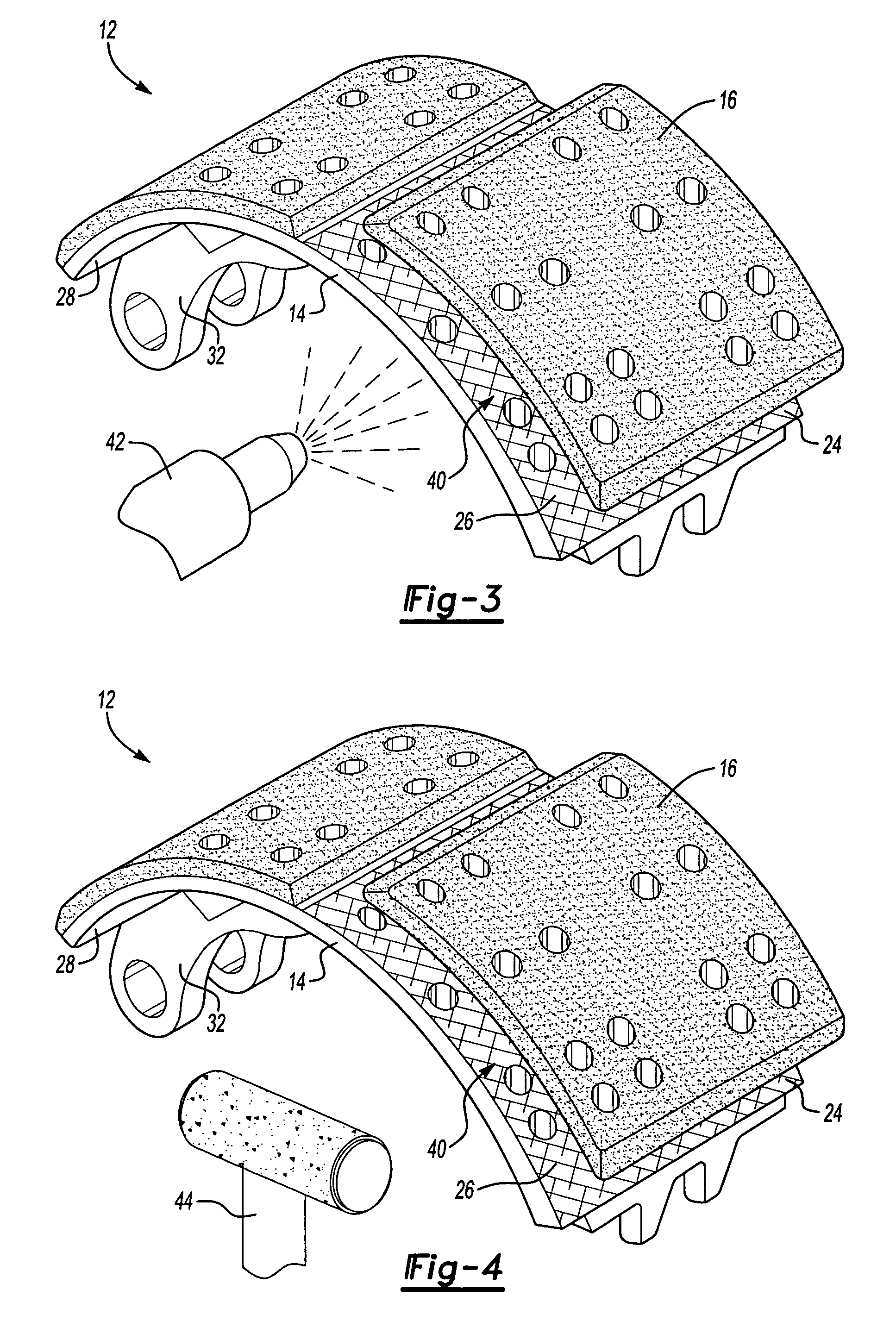Brake assembly with rust jacking
a technology of brake components and rust, which is applied in the direction of braking members, coatings, friction linings, etc., can solve the problems of friction lining cracking, less efficient braking, corrosion or rust at the interface of the brake table, etc., and achieve the effect of preventing corrosion
- Summary
- Abstract
- Description
- Claims
- Application Information
AI Technical Summary
Benefits of technology
Problems solved by technology
Method used
Image
Examples
Embodiment Construction
[0020] A brake assembly 10 is shown in FIG. 1. The brake assembly includes brake pads or brake shoes 12, with each brake shoe 12 having a support plate or brake table 14 and a friction lining 16. The friction lining 16 is formed as a lining block that is fixed to the brake table 14. In the example shown, first 16a and second 16b lining blocks are fixed to the brake table 14, however, a single lining block or additional lining blocks could also be used.
[0021] Each brake shoe 12 is fixed at one end with an anchor pin 18. An actuator 20 is associated with an opposite end of each brake shoe 12 and is used to move the brake shoes 12 into engagement with a rotating brake component such as a brake drum (not shown), for example. In the example shown, the actuator 20 comprises an S-cam that moves the brake shoes 12 in response to a brake command. Other types of actuators 20 could also be used such as wedges or hydraulic cylinders, for example. Resilient members 22 assist in returning the br...
PUM
| Property | Measurement | Unit |
|---|---|---|
| friction | aaaaa | aaaaa |
| web structure | aaaaa | aaaaa |
| liquid | aaaaa | aaaaa |
Abstract
Description
Claims
Application Information
 Login to View More
Login to View More - R&D
- Intellectual Property
- Life Sciences
- Materials
- Tech Scout
- Unparalleled Data Quality
- Higher Quality Content
- 60% Fewer Hallucinations
Browse by: Latest US Patents, China's latest patents, Technical Efficacy Thesaurus, Application Domain, Technology Topic, Popular Technical Reports.
© 2025 PatSnap. All rights reserved.Legal|Privacy policy|Modern Slavery Act Transparency Statement|Sitemap|About US| Contact US: help@patsnap.com



